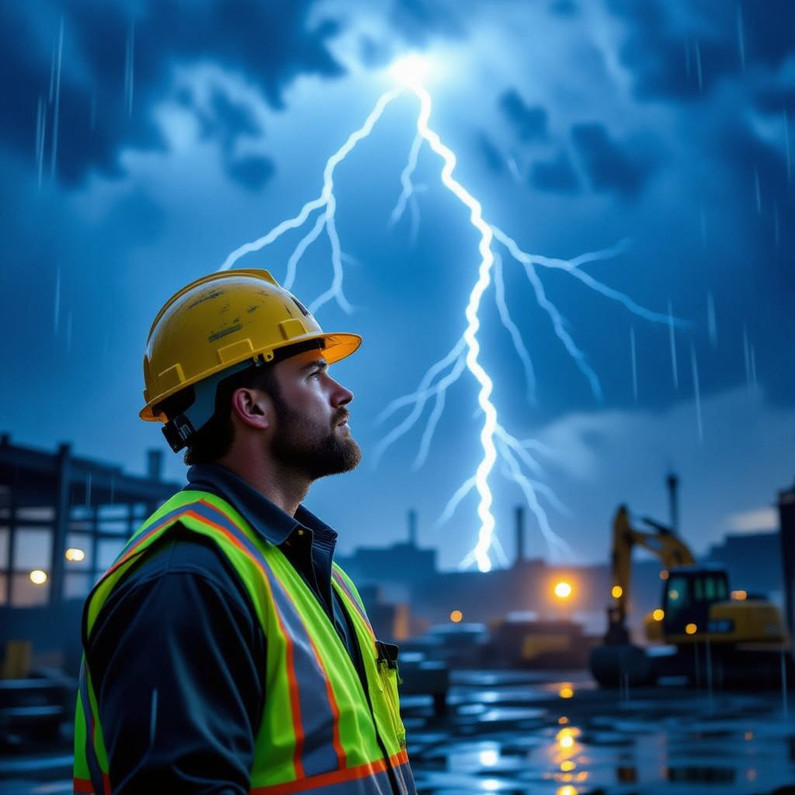Why Contractors Secretly Love Rain Days (and Secretly Hate Them Too)
Every contractor has a love-hate relationship with rain. On one hand, it means a break from the grind — a chance to catch up on paperwork, get the trucks serviced, or maybe even sleep in for once. On the other hand? It also means lost time, tight schedules, and money dripping away with every raindrop.
Rain days might be out of your control, but how you use them can make all the difference.
1. The Secret Love: A Forced Reset
Most crews won’t admit it, but there’s something oddly peaceful about hearing rain hit the jobsite instead of the sound of saws and hammers. Rain days force everyone to slow down, and sometimes, that’s exactly what’s needed.
Why it’s good:
-
Gives crews time to rest and reset.
-
Allows office staff to handle estimates, invoices, and scheduling.
-
Reduces burnout during long projects.
For contractors who are always on the go, a rainy day can feel like permission to breathe.
2. The Secret Hate: The Clock Doesn’t Stop
Of course, every hour lost to weather still costs money. Schedules don’t pause, and project deadlines don’t care about Mother Nature. Rain delays can throw off material deliveries, crew rotations, and even inspections.
Why it’s bad:
-
Lost productivity means tighter timelines later.
-
Rescheduling subs can cause a domino effect.
-
Some materials and scaffolding systems need protection from water damage.
When the forecast stretches into multiple rainy days, it’s not just inconvenient — it’s costly.
3. The Balancing Act: Turning Rain into Opportunity
The best contractors plan for downtime before it happens. Instead of letting rain derail a week, they use it to their advantage.
Smart rain-day strategies include:
-
Safety checks: Inspect scaffolding, ladders, and equipment for wear or corrosion.
-
Training refreshers: Use the time to review safety procedures or new product updates.
-
Maintenance: Service trucks, tools, and machinery so they’re ready when the sun’s back out.
-
Planning and estimating: Get ahead on bids, invoices, and material orders.
These tasks don’t just fill time; they make dry days more efficient.
4. Scaffolding and Safety in Wet Weather
Even light rain can turn a safe work area into a slippery hazard. For crews working at height, it’s never worth the risk.
Tips for wet-weather safety:
-
Always inspect planks and platforms before use.
-
Avoid climbing scaffolding with wet boots or gloves.
-
Secure tarps or covers properly to prevent pooling water.
-
Never compromise footing just to “get a little more done.”
Sometimes, the smartest move is waiting out the weather.
Final Thoughts
Contractors may grumble about rain, but most secretly appreciate what it brings: a chance to reset, reorganize, and return stronger. Rain days remind us that time off the job can be just as valuable as time on it, if it’s used wisely.
At Southwest Scaffolding, we help contractors prepare for every kind of day — rain or shine. From durable scaffolding systems to safety gear and ladders, we’ve got the equipment to keep your crew ready when the skies clear.
Recent Posts
-
When Renovation Turns Risky: Lessons from the Tai Po Fire and the Role of Scaffolding Safety
The recent fire in Hong Kong’s Tai Po district has shaken the global construction and safety communi …Nov 30th 2025 -
Innovations in Scaffolding Technology: How Modern Advances Boost Safety and Efficiency
Scaffolding is fundamental to construction, masonry, restoration, and maintenance work. While the co …Nov 29th 2025 -
Scaffolding Regulations and Compliance: What Homeowners & Contractors Need to Know
When it comes to scaffolding, safety isn’t optional—it's the law. Whether you’re a contractor, DIY h …Nov 28th 2025




